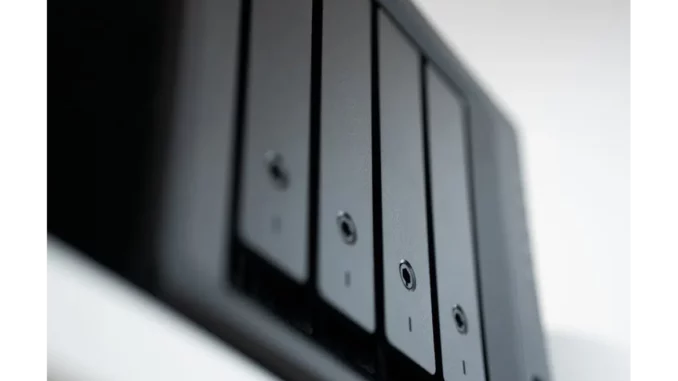
Summary
Home Storage Dilemma: Why a SAN May Not Be Your Best Bet
In a lively discussion at a local coffee shop, IT consultant Daniel Lawson dissected the differences between Storage Area Networks (SAN) and Network-Attached Storage (NAS) for home users. Despite SANs offering superior performance, scalability, and suitability for data-intensive applications, Lawson emphasised they are not ideal for home environments due to their complexity and cost. “Unless you’re running a data centre from your garage,” he cautioned, “a SAN is overkill for the average home user.”
Main Article
Meeting at a bustling café, Daniel Lawson, an experienced IT consultant, offered his insights into the often-confusing world of home storage solutions. The conversation focused on the dichotomy between Storage Area Networks (SAN) and Network-Attached Storage (NAS), two technologies that serve distinct needs but are frequently muddled by consumers seeking robust home storage options.
Understanding the Performance Gap
Lawson opened the dialogue by highlighting the striking performance gap between SAN and NAS. “SANs offer incredible performance,” he began. “While a typical NAS might top out at 10Gbps, a SAN, with high-speed fibre connections, can reach speeds up to 128Gbps.”
This substantial speed advantage explains why SANs are favoured by IT teams in large enterprises where performance is critical. However, Lawson was quick to point out the redundancy of such capabilities for home users. “Unless you’re running a data centre from your garage,” he quipped, “this level of performance is overkill.”
Exploring Scalability and Flexibility
Another reason SANs are considered premium is their scalability. “A NAS is a more static solution,” Lawson explained. “Once set up, you’re largely restricted to its original configuration, save for a few potential expansions.”
Conversely, SANs allow for expansion with additional storage controllers and arrays, offering significant flexibility. “This modularity is fantastic for redundancy and growth,” he said. However, he questioned the need for such extensive scalability in a home setting.
Application Suitability and Complexity
Lawson also noted that SANs excel in environments where data-intensive applications are routine. “It offers outstanding performance and availability when multiple clients need to work on stored data simultaneously,” he explained. This makes SANs advantageous for professionals in video editing or large-scale simulations, but again, such scenarios rarely occur in home settings.
Further complicating matters, SANs function as local block storage, appearing as local drives on connected devices. “While this feature is enticing, it adds complexity,” he warned. “Managing a SAN requires more technical know-how, which might not be ideal for the average person setting up a home network.”
The Case Against Home Use
Despite SAN’s numerous advantages, Lawson was resolute on their unsuitability for home use. “The cost alone is prohibitive,” he asserted. “Setting up a SAN involves not just buying the hardware but also a significant investment in time and expertise.”
He highlighted SAN’s design for heavy data processing and storage, contrasting it with NAS’s simplicity. “A NAS is a single device that’s far easier to set up and manage. It’s perfect for home users who want simplicity and reliability.”
In conclusion, while SANs might outstrip NAS in raw performance and scalability, for most home users, the simplicity and sufficiency of a NAS make it the preferable choice. “Consider what you need,” Lawson advised. “If simplicity and affordability are your priorities, a NAS is your best bet.”
Detailed Analysis
Economic Implications and Market Trends
The conversation with Lawson reflects broader trends in the technology market, where demand for consumer-friendly, cost-effective solutions continues to rise. As remote work and home-based digital projects increase, consumers seek out storage solutions that offer reliability without the complexity or expense associated with enterprise-level systems.
Moreover, the ongoing development of high-speed internet access and cloud storage services further diminishes the need for high-performance home storage networks like SAN. The global market for NAS devices is projected to grow substantially, driven by small businesses and home users prioritising ease of use.
Political and Regulatory Considerations
As data privacy and security concerns become more prominent, the simplicity of NAS systems offers an additional advantage. They typically incorporate straightforward security features suitable for personal use, aligning with increasing regulatory scrutiny over data protection. This trend may further influence consumer choices, positioning NAS as a more secure option for individuals wary of complex data management.
Further Development
Emerging Technologies and Future Prospects
Looking ahead, advancements in both SAN and NAS technologies could blur the lines between these systems, potentially offering hybrid solutions that cater to a broader range of users. Innovations in software-defined storage and enhanced user interfaces might make SANs more accessible, while NAS devices could see improvements in speed and capacity.
For ongoing coverage of home storage developments and expert insights, continue to follow our technology section. As the landscape evolves, staying informed will be crucial for making the right choice in digital storage solutions.

